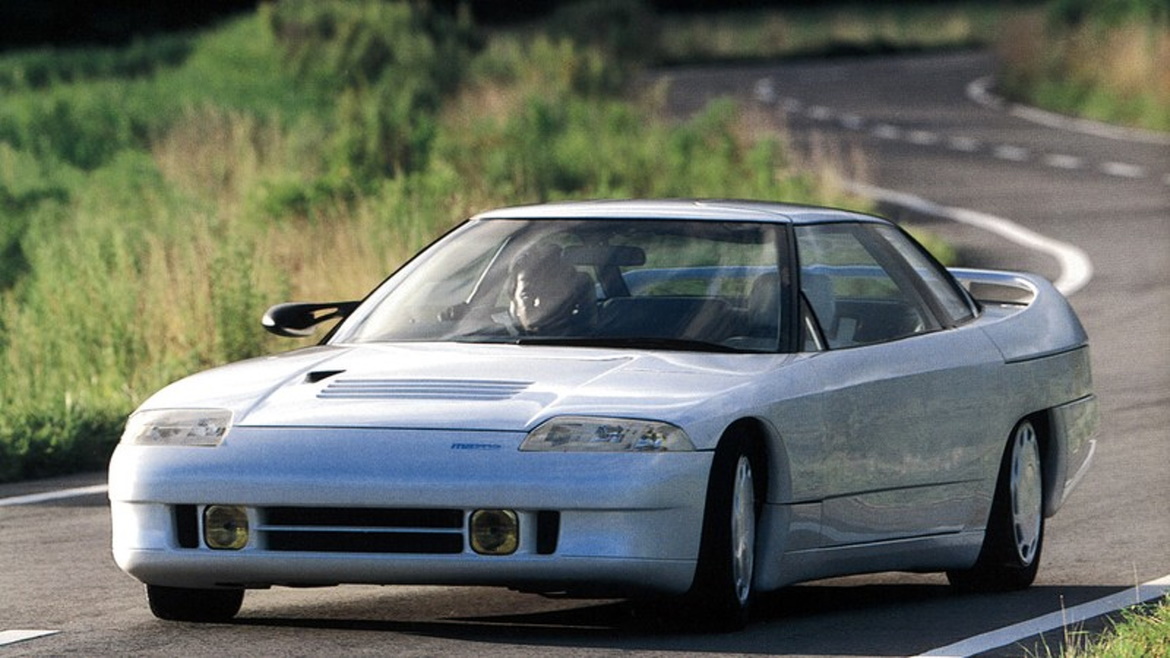In the year it celebrates its centenary, Mazda looks to the future with the debut of its first fully electric production car: the Mazda MX-30. With its personal style and freestyle doors combined with an interior that uses environmentally friendly materials combined with quality and meticulous finish, the MX-30 adds to the Mazda range. But why has it been awarded the MX designation? The MX-5 is the most famous of all, but a look at Mazda’s history shows that the MX prefix actually predates the world’s best-selling roadster and, in fact, has been used more than a dozen times for a wide variety of Mazda production, concept and racing cars.
The MX prefix is assigned to a car that poses a challenge to create and deliver new values without being limited by convention, regardless of vehicle type. When it was introduced in 1989, the Mazda MX-5 was exactly such a car: while the automotive industry had moved away from the budget sports car, Mazda had challenged convention to create a perfect modern reinterpretation of the classic rear-wheel drive roadster. More than three decades later, the MX-5 is the world’s best-selling two-seater sports car and needs no introduction, while the first car to offer the MX is less famous.
Presented in 1981, the Mazda MX-81 Aria concept car was designed by Italian designer Bertone, who, using the mechanics of the Mazda 323, created a futuristic wedge-shaped saloon car. With its gilded paintwork, huge glass surface and retractable headlights, the MX-81 made an impression at the Tokyo Motor Show; but with its recessed rectangular steering wheel, TV screen cockpit and swinging front seats, the concept probably had its most extreme part in the interior. The one-off concept certainly posed a challenge to the conventions of the MX models and led to the subsequent relationship with the Bertone; while elements such as top-mounted taillights and pop-up headlights appeared on future production Mazdas in the 1980s.
Next in the MX genious was the 1983 MX-02 concept car, a flat-sided five-door with large windows and aerodynamic rear wheel covers and flared exterior mirrors. Exclusive features included steerable rear wheels and a head-up display on the windscreen. The one-off theme continued with the 1985 Mazda MX-03, which was again a radical-looking concept car, but this time it was a conventional sports car powered by a 315 hp triple rotor engine.
While the MX-02 and MX-03 shared some of the same futuristic design ideas, the MX-04 was completely different. Unveiled at the 1987 Tokyo Motor Show in 1987, the MX-04 was a front-engined, rear-wheel-drive sports car with removable fibreglass panels, but not in one set but two different sets, transforming the car from a fully glazed coupé to a roadster with open, beach-style buggy sides. Powered by a rotary engine, this extravagantly transforming sports car never had a real prospect of mass production, but few knew that Mazda was already developing the MX-5 and, in fact, only two years later came the most famous of the MX models.
The 2002 MX-Sport Runabout concept previewed the modern look of the second generation Mazda2, while the 2003 MX-Sportif was the concept prefiguring the first generation Mazda3, a big step forward from the Mazda 323 it was replacing. The MX-MicroSport was a hatchback concept designed for the US, presented at the 2004 Detroit Motor Show, but the MX concept of the 1990s that really set Mazda on the road to another success story that set it apart from other brands was the 2005 MX-Crossport. Inspired by the sporty Mazda RX-8, it was a sporty-looking SUV with sculpted wheel arches, slim headlamps and bold waistlines that anticipated the Mazda CX-7, a seminal car that established how Mazda could build a sleek, sporty SUV with saloon-like road behaviour to rival the best SUVs from premium brands. MX-Crossport launched a lineage of award-winning SUVs that led to today’s CX-5 and CX-30.
















